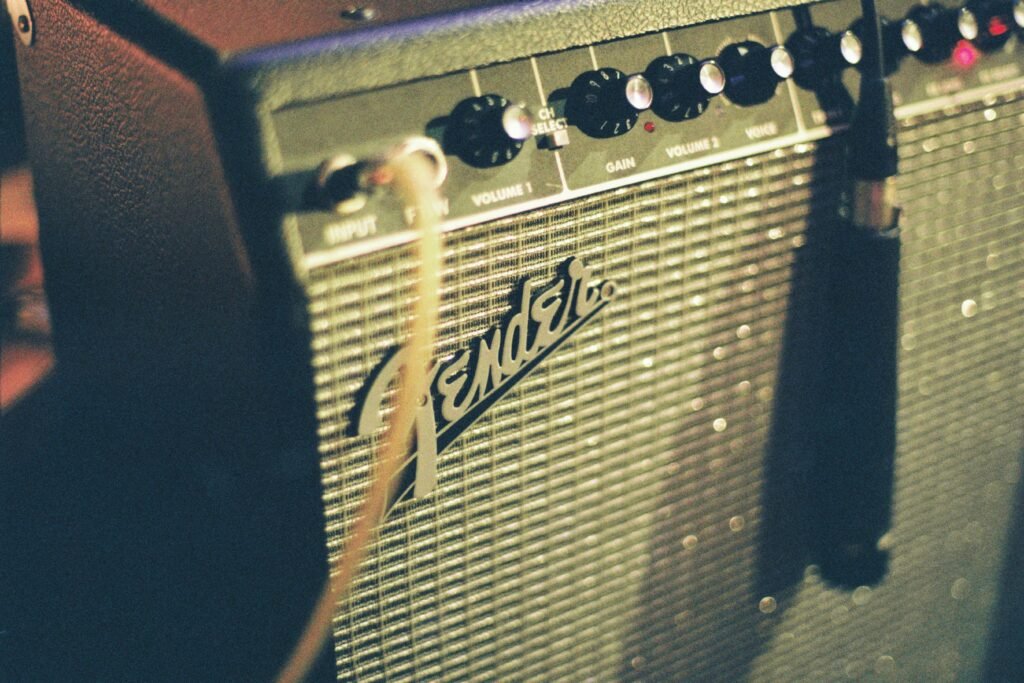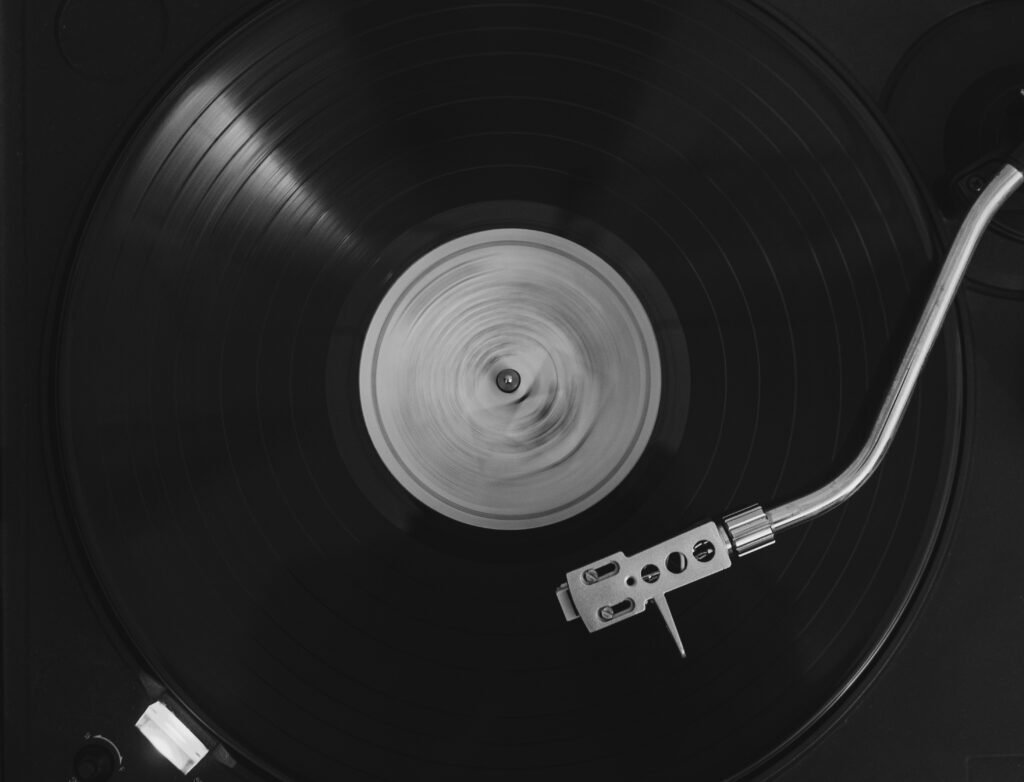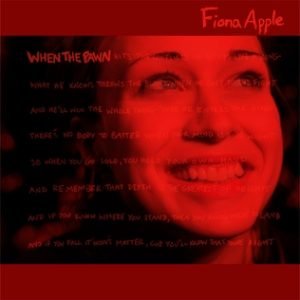Released in November 1999, When the Pawn… stands as a monumental chapter in Fiona Apple’s discography, marking both a continuation of her unflinching introspection and a bold leap into new artistic territory. Officially titled When the Pawn… (a shortened version of its 90-word poem), the album followed her 1996 debut Tidal, which had already catapulted her into critical and commercial success. Where Tidal introduced a raw and emotionally vulnerable voice, When the Pawn… saw Apple sharpen that voice with even greater lyrical complexity, deeper emotional exploration, and a willingness to experiment sonically.
Artistic Intentions
At a time when pop music was dominated by glittery, radio-friendly hits, Apple’s sophomore album was anything but conventional. It arrived in the wake of media scrutiny and personal challenges, including public backlash following her infamous MTV VMA speech in 1997, where she called out the industry’s superficiality. This context is crucial to understanding the fiery, unapologetic spirit that runs through When the Pawn…. The album wasn’t a retreat—it was a defiant push forward, with Apple asserting control over her narrative and creative voice.
In terms of artistic intentions, Fiona Apple sought to confront her own emotional struggles and societal pressures head-on. She navigates themes of vulnerability, empowerment, and mental anguish with a poetic depth that is rare in mainstream music. Apple’s interviews from the time reflect this ambition: she wasn’t merely interested in writing catchy songs; she was creating art that challenged both herself and her listeners. When the Pawn… was a response to a world that seemed eager to define her, yet she refused to be pigeonholed, expanding on the themes of self-empowerment, existential frustration, and emotional turbulence that she first explored in Tidal.
Sonic Exploration

When the Pawn… is a masterclass in sonic exploration, with production values that are both lush and intricate, a reflection of Fiona Apple’s deepening partnership with producer Jon Brion. The production is anything but lo-fi or gritty; instead, it leans into a polished, cinematic clarity that brings each instrument and vocal layer to the forefront. However, this doesn’t mean the album feels overly slick or artificial—there’s an organic warmth to the sound, a careful balance between precision and emotional rawness that mirrors the intensity of Apple’s songwriting. The clarity of the production serves the album’s themes perfectly, allowing the listener to engage deeply with both Apple’s evocative lyrics and the nuanced musical textures that surround them.
Musical Arrangements
Jon Brion’s influence on the musical arrangements is unmistakable. Known for his experimental, baroque-pop sensibilities, Brion fills When the Pawn… with rich, orchestral layers that add a sense of grandeur to the emotional weight of the songs. Apple’s piano remains the album’s backbone, but it’s the unexpected flourishes—off-kilter drum patterns, lush string sections, quirky percussive elements, and jazz-inflected bass lines—that make the arrangements truly stand out. For example, on tracks like “Fast as You Can,” frenetic drum loops contrast sharply with Apple’s sultry, breathy vocals, creating a tension that mirrors the song’s lyrical anxiety. In “Paper Bag,” whimsical brass arrangements elevate what could have been a simple piano ballad into something more whimsical and biting.
The arrangements also reflect Apple’s willingness to embrace imperfection and complexity. Songs like “Limp” and “Get Gone” build slowly, layering instruments and textures until they explode into emotionally charged climaxes. Her vocals—by turns wounded, defiant, and vulnerable—are often multi-tracked or accompanied by unconventional harmonies that heighten the sense of internal conflict and emotional depth. The interplay between her voice and the instrumentation creates a sonic landscape that feels like an intimate conversation, both with herself and the listener.
Genre Elements
In terms of genre, When the Pawn… draws from a rich palette of influences, blending alternative rock, jazz, baroque pop, and even elements of cabaret. Apple refuses to be confined to a single style, moving fluidly between genres in a way that feels innovative rather than disjointed. The jazz-inflected rhythms of “On the Bound” and “A Mistake” recall the experimental spirit of mid-century jazz, while the melancholic balladry of “Love Ridden” and “I Know” nods to the confessional singer-songwriter tradition. At the same time, there’s a palpable rock edge to tracks like “Limp” and “Fast as You Can,” with their pounding percussion and aggressive, almost punk-like energy.
Lyrical Analysis

At the heart of When the Pawn… lies a powerful exploration of vulnerability, defiance, and self-exploration, woven together through Fiona Apple’s deeply personal and often cryptic lyrics. The album’s central themes revolve around the struggle for self-empowerment amidst emotional turmoil, the complexity of relationships, and the battle between strength and fragility. Apple’s lyrics read like a series of internal dialogues, where she confronts her own insecurities, desires, and frustrations, while simultaneously pushing back against external pressures—be they from lovers, society, or even herself.
One of the album’s recurring motifs is the tension between control and chaos. In songs like “Fast as You Can” and “Limp,” Apple grapples with feeling trapped by emotional volatility, yet determined to break free from these constraints. “Fast as You Can” portrays this struggle explicitly, with lines like “I let the beast in too soon, I don’t know how to live without my hand on his throat,” which convey the internal tug-of-war between impulses and restraint.
In “Limp,” she confronts manipulation head-on, embodying a fiery defiance with the words, “You fondle my trigger, then you blame my gun,” rejecting the way others try to diminish her power. Throughout the album, Apple’s lyrics offer a delicate dance between fragility and strength, reflecting the dualities present in the human experience.
Lyrical Depth
In terms of lyrical depth, When the Pawn… moves far beyond the straightforward narratives of Apple’s earlier work on Tidal. The lyrics here are dense, poetic, and often ambiguous, demanding multiple listens to fully unravel their meaning. Apple’s use of vivid, often surreal imagery adds layers to the emotional intensity of the songs. For instance, in “Paper Bag,” she juxtaposes whimsical imagery—“I thought it was a bird, but it was just a paper bag”—with raw vulnerability, as she reflects on disappointment and self-deception in relationships. The song’s childlike metaphors stand in contrast to the complexity of the emotions underneath, making it both accessible and profoundly layered.
Apple often employs metaphor, symbolism, and wordplay in a way that allows her lyrics to function on multiple levels. In “A Mistake,” she sings, “I’m gonna make a mistake, I’m gonna do it on purpose,” a declaration that sounds reckless on the surface but can be interpreted as a call for self-acceptance and freedom from perfectionism. In “Love Ridden,” Apple turns the familiar theme of heartbreak into something more nuanced and devastating, describing how love leaves us drained, “sunk like treasure,” and ultimately “gone as love is wont to do.” This intricate use of language makes the album feel more like a collection of poems than songs, each one filled with riddles for the listener to solve.
Emotional Impact
Emotionally, the lyrics are the beating heart of the album, elevating its impact far beyond its impressive musicianship. Apple’s words evoke a wide range of emotions, from righteous anger and frustration to moments of quiet, devastating vulnerability. Songs like “I Know” and “Love Ridden” evoke profound sadness and resignation, their lyrics steeped in the ache of lost love and acceptance of inevitable pain. Yet there are also moments of empowerment, where Apple seems to reclaim her voice and autonomy, as in “Limp” and “Get Gone,” where she refuses to be anyone’s victim, daring to assert her worth.
The overall emotional resonance of When the Pawn… is one of catharsis. The album reads like a confessional, with Apple revealing her rawest emotions through artfully crafted lyrics that leave a lasting impression on the listener. Whether it’s through moments of searing anger, deep sadness, or quiet contemplation, the lyrics create a space for listeners to reflect on their own emotional landscapes, making the album a deeply personal and transformative listening experience.
Cohesion and Flow

One of the defining strengths of When the Pawn… is its remarkable cohesion, both in terms of emotional trajectory and thematic consistency. The album feels carefully constructed, with each track serving as a piece of a larger puzzle, offering insights into Fiona Apple’s emotional landscape and personal growth. From start to finish, the songs flow into one another with a natural ease, creating a sense of emotional progression that guides the listener through a journey of vulnerability, self-reflection, and empowerment.
Track Progression
In terms of track progression, When the Pawn… opens with a powerful statement in “On the Bound,” setting the tone for the album’s exploration of tumultuous relationships and inner conflict. The song’s brooding intensity immediately immerses the listener in Apple’s world, introducing themes of emotional entanglement and frustration that will recur throughout the album. As the record unfolds, there’s a deliberate ebb and flow between moments of introspective quiet and fiery defiance. Songs like “To Your Love” and “Love Ridden” slow things down, allowing for moments of raw vulnerability, while tracks like “Limp” and “Fast as You Can” ramp up the energy, creating a dynamic listening experience that never feels stagnant.
The progression from emotional turmoil to a kind of resolute self-acceptance is subtle but powerful. The early tracks are marked by frustration, uncertainty, and the emotional push-and-pull of difficult relationships. By the time the album reaches its closing moments with “I Know,” there’s a quiet acceptance and maturity that feels hard-earned. “I Know” serves as a poignant conclusion, its gentle melancholy suggesting that while the emotional turbulence may never fully disappear, there’s a sense of peace in acknowledging it. This sense of resolution gives the album a satisfying arc, even though it resists offering neat or easy answers.
Thematic Consistency
Thematic consistency is another area where When the Pawn… excels. Throughout the album, Apple navigates themes of self-worth, power dynamics in relationships, emotional chaos, and resilience. These themes are present in almost every track, providing a throughline that ties the album together. Even though Apple shifts between moments of anger, sadness, and reflection, the emotional and lyrical core remains constant. There are no jarring shifts in tone or style that disrupt the album’s flow—instead, Apple and producer Jon Brion manage to blend diverse musical influences and moods into a cohesive whole.
Musically, the album maintains a consistent aesthetic as well, with Jon Brion’s lush, orchestrated production providing a unifying sonic backdrop. The mix of baroque-pop, jazz, and alternative rock elements feels deliberate and complementary, ensuring that even when a song veers into unexpected musical territory—like the frenetic percussion in “Fast as You Can” or the jazz flourishes in “A Mistake”—it doesn’t feel out of place. The cohesive production style acts as a glue, holding together the album’s diverse emotional landscapes.
Standout Tracks and Moments
When the Pawn… is packed with standout tracks, each offering a different facet of Fiona Apple’s artistry. Certain songs shine for their innovative production, lyrical depth, or emotional weight, making them key moments on the album. These tracks capture Apple’s essence as a fearless, introspective artist unafraid to push musical and lyrical boundaries.
Key Tracks
“Fast as You Can”
As the album’s lead single, “Fast as You Can” is a standout for its daring, unconventional structure and frantic energy. The song feels like a sonic embodiment of internal conflict, with shifting tempos and time signatures that mirror the chaos Apple describes in the lyrics. Jon Brion’s production is at its most experimental here, blending syncopated drums, jazzy piano riffs, and sudden tempo changes that create a sense of unease. Lyrically, Apple reflects on self-sabotage and emotional turbulence: “I let the beast in too soon, I don’t know how to live without my hand on his throat.” It’s a raw, restless track that perfectly captures the album’s spirit of emotional complexity and defiance.
“Paper Bag”
This track is a lyrical and sonic triumph, blending whimsy with heartbreak in a way that only Fiona Apple can. “Paper Bag” stands out for its jazz-influenced piano melody and upbeat tempo, which contrast sharply with the song’s theme of self-deception and disillusionment. The imagery is unforgettable, as Apple sings, “I thought it was a bird, but it was just a paper bag,” a metaphor for the emotional letdowns we experience when reality doesn’t meet our hopeful expectations. The brass accents and buoyant rhythm make the track feel light on the surface, but beneath, there’s a sense of deep emotional reckoning, marking it as one of the album’s most complex and memorable moments.
“I Know”
The closing track, “I Know,” is the emotional anchor of the album, leaving a lasting impact with its quiet, tender simplicity. Apple’s stripped-back piano playing and raw, unembellished vocals allow the vulnerability of the lyrics to shine through. The song feels like a fragile plea for understanding, tinged with resignation but also a glimmer of hope. Lines like “I know you’re wise beyond your years, but do you ever get the fear that your perfect verse is just a lie you tell yourself to help you get by?” evoke a sense of introspective longing, as Apple confronts the complexity of love and loss. Its emotional honesty and delicate delivery make it a haunting, beautiful way to close the album.
Memorable Moments
The Drum Loop in “Fast as You Can”
One of the most exhilarating moments on the album comes in the form of the frenetic drum loop in “Fast as You Can.” The erratic, jazz-infused percussion builds a palpable sense of tension, perfectly capturing the restlessness of Apple’s lyrics. This rhythmic unpredictability is a hallmark of Jon Brion’s production, but it also highlights Apple’s own penchant for pushing musical boundaries. The way the song slows down for a seductive piano bridge, only to speed up again, is a thrilling moment of contrast that encapsulates the album’s emotional and sonic volatility.
The Brass Section in “Paper Bag”
The playful yet bittersweet brass section in “Paper Bag” is another standout moment. It adds a sense of whimsy to a song that is, at its core, about disillusionment. This juxtaposition of musical levity and lyrical sorrow creates a rich emotional texture, making “Paper Bag” a quintessential example of Apple’s ability to blend humor and melancholy in her music. The brass feels almost celebratory, as if trying to uplift the narrator’s spirits despite her heartbreak.
The Final Line of “I Know”
The final, whispered line of “I Know”—“I guess I just wanted you to know”—is a moment of raw vulnerability that lingers long after the music fades. This simple, quiet confession leaves the listener with the impression of an unresolved, ongoing emotional journey, as if Apple has peeled back layers of herself throughout the album only to reveal that the healing process is still incomplete. The use of silence that follows the line is just as powerful, allowing the listener to sit with the weight of her words.
The Use of Silence in “Love Ridden”
In “Love Ridden,” Apple’s expert use of silence and space between the notes amplifies the song’s emotional gravity. As she sings about the death of love—“No, not baby anymore, if I need you, I’ll just use your simple name”—the pauses between the lines emphasize the finality of her decision. The sparse instrumentation and Apple’s controlled delivery create an atmosphere of quiet resignation, with the silence speaking as loudly as the lyrics themselves.
Artistic Contribution and Innovation

When When the Pawn… was released in 1999, it cemented Fiona Apple’s place as one of the most innovative and daring voices in the music industry. Arriving at the tail end of the ‘90s, the album stood in stark contrast to the glossy, radio-friendly pop that dominated the charts at the time, as well as the angst-driven grunge and alt-rock movements that had characterized much of the decade. Apple’s sophomore effort not only pushed boundaries within the singer-songwriter genre but also challenged the conventions of alternative rock, pop, and jazz, making When the Pawn… an album that defied easy categorization.
Place in Genre/Industry
Within the singer-songwriter tradition, Apple was not content to simply follow in the footsteps of her predecessors. While the confessional nature of her songwriting and piano-driven compositions could place her alongside legends like Joni Mitchell or Carole King, Apple’s approach was far more experimental and confrontational. Her lyrics were raw, unfiltered, and often dark, diving deep into themes of emotional turmoil, power struggles, and existential frustration, all while avoiding the soft, folksy tones of many of her contemporaries. She fused these confessional narratives with a sonic landscape that borrowed from rock, jazz, baroque pop, and even cabaret, placing her outside the neatly defined boundaries of any single genre.
In an industry increasingly driven by commercial appeal, When the Pawn… was a bold rejection of formulaic pop structures. It embraced complexity and discomfort, both lyrically and musically, with Apple’s idiosyncratic vocal delivery and Brion’s unpredictable production choices creating something that felt wholly unique in the late-90s music scene. In this sense, the album positioned Fiona Apple as a true artist, someone willing to subvert industry expectations and create on her own terms—a path she would continue to follow throughout her career.
Innovation
When the Pawn… is rich with innovation, starting with its production. Jon Brion’s contributions were groundbreaking, blending lush orchestration with unconventional instrumentation in ways that felt organic rather than overly polished. This combination of traditional instruments—strings, brass, piano—with experimental soundscapes, including eerie percussive loops and distorted rhythms, created a sonic environment that was both expansive and intimate. Brion’s production allowed each song to unfold like a miniature world of its own, with layers of sound that rewarded repeated listens. This approach was particularly fresh in a time when most mainstream pop albums leaned heavily on straightforward production techniques.
Genres
One of the album’s most innovative aspects is how it reimagines genre boundaries. Apple doesn’t just flirt with multiple genres—she blends them seamlessly. Tracks like “Fast as You Can” incorporate frenetic, jazz-infused rhythms alongside rock energy, while “Paper Bag” mixes whimsical pop melodies with jazzy, brassy flourishes. The result is an album that doesn’t adhere to any one musical identity but rather creates its own hybrid form, a fluid merging of genres that feels cohesive despite its diversity. This cross-genre approach was ahead of its time, predating the genre-fluidity that has become more common in modern music.
Themes
Thematically, the album’s innovation lies in its unflinching emotional honesty and the depth of its introspection. Apple’s lyrics are not only confessional but confrontational—she turns her gaze inward with a brutal honesty that can be uncomfortable for the listener, yet deeply cathartic. Her refusal to sugarcoat difficult emotions, paired with her use of vivid, often surreal imagery, sets her apart from the more straightforward songwriting typical of the time. Apple’s willingness to embrace emotional messiness, coupled with her complex metaphors, challenged the norms of songwriting in popular music, making her work feel more like poetry than mere lyrics.
Structure
Another significant innovation is the album’s narrative structure—or lack thereof. While many albums follow a clear thematic or emotional arc, When the Pawn… is more like a collection of emotional vignettes, each track offering a different perspective on the central themes of love, power, and vulnerability. This fragmented structure mirrors the chaos of real-life emotional experiences, and its refusal to provide clear resolutions or answers feels revolutionary, particularly in the pop landscape, which often favors neat, cathartic conclusions.
Closing Thoughts

When the Pawn… is a triumph of emotional honesty, lyrical complexity, and sonic innovation. Fiona Apple’s sophomore album stands as a bold statement of artistic defiance, offering a fearless exploration of vulnerability and strength. One of its greatest strengths lies in the way it blends intensely personal lyrics with Jon Brion’s intricate, genre-defying production, creating an immersive listening experience that feels both intimate and expansive. Apple’s ability to fuse confessional songwriting with experimental musical structures makes the album a powerful, singular work in her discography, one that continues to resonate with listeners decades after its release.
Strengths & Weaknesses
The album’s strengths are manifold. Lyrically, it is a poetic tour de force, packed with vivid metaphors and raw emotional confessions that invite the listener into Apple’s inner world. Musically, it pushes boundaries, effortlessly blending alternative rock, jazz, baroque pop, and more. The dynamic arrangements, filled with unexpected flourishes and shifts in mood, ensure that each song feels fresh and compelling. Additionally, the album’s thematic cohesion, combined with its emotional depth, makes it feel like a unified journey despite the variety in sound.
If there is any potential weakness, it may be that the album’s complexity can feel overwhelming at times. Its constant shifts in tone and tempo, as well as its refusal to follow conventional pop structures, may alienate some listeners who are seeking more straightforward songwriting. However, this very unpredictability is also one of the album’s greatest strengths, making it a rewarding experience for those willing to dive deep into its layers.
Place in Career
In terms of its place in Fiona Apple’s career, When the Pawn… is a pivotal album, marking her evolution from a promising young artist into a fully realized, fearless creative force. It builds on the themes of vulnerability and emotional turmoil introduced in Tidal, while expanding her sound and lyrical scope in ways that set the stage for the even more adventurous works that would follow. The album’s willingness to push boundaries and reject mainstream expectations has earned it a lasting place in music history as one of the most important alternative albums of the late 1990s.
Official Rating
Ultimately, When the Pawn… deserves a perfect score of 10/10. This is not just because of its technical brilliance or innovative production, but because of the emotional impact it delivers. It’s a deeply human record—one that doesn’t shy away from the messiness of emotions, relationships, or self-discovery. Fiona Apple invites listeners into her world of heartbreak, frustration, and resilience, and in doing so, she creates a space for catharsis and reflection. It’s an album that resonates on a personal level for many listeners, transcending its time of release and remaining a touchstone for emotionally honest, genre-defying music.
